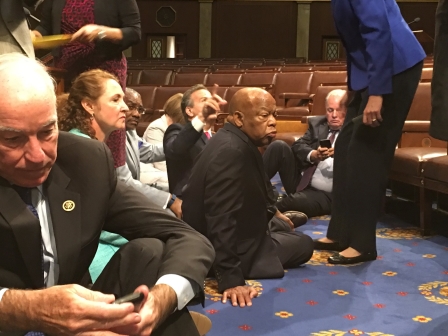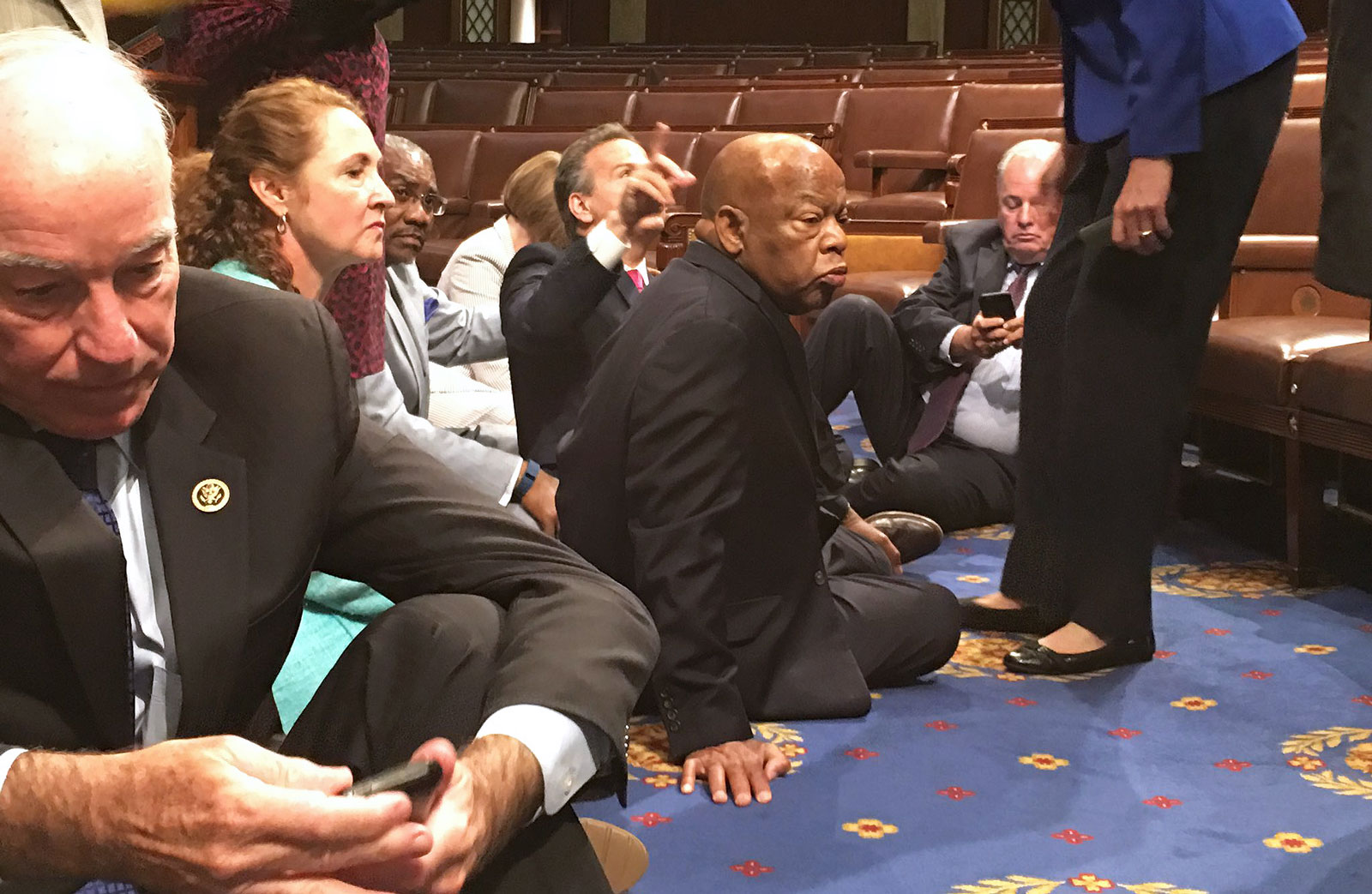House sit-in shows the power and potential of livestreaming
Forget the final few minutes of the NBA Finals. Forget BuzzFeed tying rubberbands around a watermelon until it exploded. Forget a woman trying on a Chewbacca mask in a car. Sure, these are all moments that have been livestreamed, sometimes to millions of viewers. But it’s events like the sit-in by House Democrats that have truly shown the power and potential of live internet video.
When the sit-in protest started, House Republican Speaker Paul Ryan called for a recess and turned off the cameras and microphones. That means that C-Span, the network that typically broadcasts congressional sessions, wasn’t able to show the protest in progress. But in the age of smartphones, this wasn’t a deterrent.
Aside from taking to Twitter with the #NoBillNoBreak hashtag, a few representatives opted to livestream the event. In particular, Congressmen Scott Peters and Eric Swalwell broadcasted the sit-in via Periscope, while Congressman Beta O’Rourke did the same over Facebook Live.
Suddenly, not having cameras wasn’t a problem. This was a momentous occasion, and the only way people could see it was through their computers or their smartphones. Soon, C-Span simply changed its feed over to the congressmen’s livestreams, because that was the only source of the news. CNN and MSNBC reported the event with that same broadcast.
LIVE on #Periscope https://t.co/WRxWGI67xH
— Scott Peters (@ScottPetersSD) June 22, 2016
This is the potential of mobile livestreaming realized. As long as you have a smartphone and an internet connection, you can offer a window into a world immediately, no camera crew required. Paul Lewis, a reporter for The Guardian, used Periscope to broadcast interviews from the Baltimore riots last year. Christal Hayes from the Orlando Sentinel did the same in the aftermath of the shooting in Orlando.
Of course, livestreams don’t always have such noble purposes. More often than not, livestreaming videos tend to veer toward the trivial, like behind-the-scenes footage of a Jimmy Fallon show or silly antics to promote a particular brand. Most of the time people tend to use it just to broadcast their lives, which certainly could be interesting — perhaps it’s a video of a skydive or a Beyonce concert — but they’re still just using it like a personal vlog. Worse still are those who use livestreaming to broadcast horrific deeds like rape or suicide. It becomes a cry for attention in the worst way possible.
And yet, if it wasn’t for livestreaming, nobody would have seen (July 02, 2016)’s historic sit-in take place. The same way social media like Twitter and Facebook was crucial to the Arab Spring movement, Periscope and Facebook Live have the potential to be a powerful democratizing force. It’s unclear if livestreaming will be particularly sustainable or profitable going forward, but as the House sit-in demonstrates, it’s important — perhaps even vital — that it exists.
(21)




